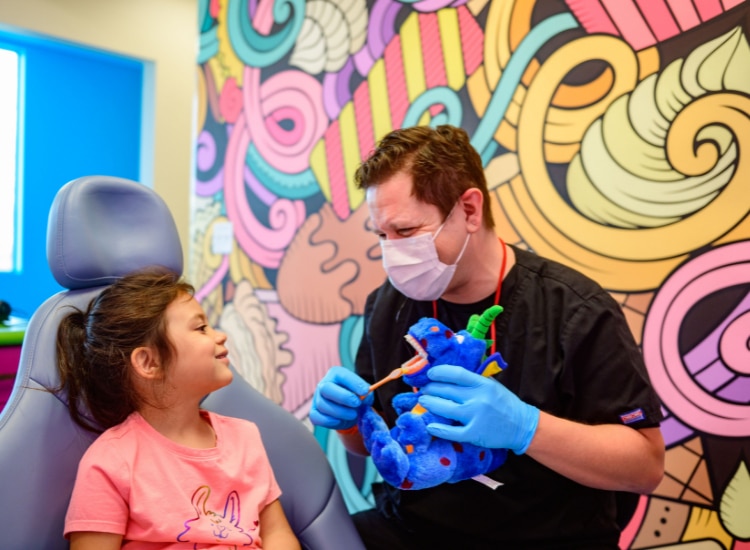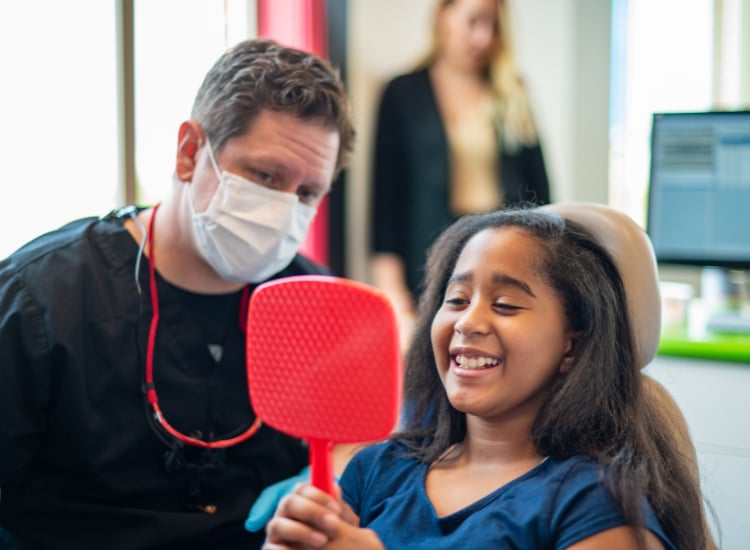Childhood Thumb Sucking: Impacts on Dental Health and How to End the Habit

Kids Dentist Murray UT, Dr. Ari Hobfoll

Thumb sucking can be a natural reflex for infants and young children, but it can become a habit that persists beyond the age when it is considered normal. While thumb sucking is harmless in the early years, prolonged thumb sucking can lead to dental problems and other issues, such as speech difficulties.
As a parent, it can be difficult to find ways to help your child kick their thumb sucking habit. In this article, we will discuss the problems that can arise from thumb sucking and tips for how you can help and encourage your child to stop.
Impacts of Thumb Sucking on Your Child’s Dental Health

While thumb sucking in the early years is generally considered harmless, allowing the habit to persist can have lasting negative effects on your child’s dental health. For example:
Altered Tooth Alignment and Jaw Structure
The constant pressure exerted by thumb sucking can cause the front teeth to move outward and create an overbite. The habit may also lead to changes in the upper jaw structure, affecting the alignment of teeth and potentially making orthodontic treatment necessary in the future.
Speech Difficulties
Incorrect tooth alignment and changes in jaw structure may contribute to speech problems. Sounds that require the tongue to touch the upper front teeth, like “s” and “th,” can be particularly affected.
Development of an Open Bite
Prolonged thumb sucking may result in an open bite, a condition where the upper and lower front teeth do not meet when the mouth is closed. This can lead to difficulties in biting and chewing food. This could also result in the need for orthodontic treatment.
Gum Irritation
The repeated act of thumb sucking can cause irritation to the gum tissue, potentially leading to increased sensitivity or other gum issues.
Steps to Help Your Child to Stop Thumb Sucking

Understand the Reasons for Thumb Sucking
The first step in addressing your child’s thumbsucking habit is understanding the underlying motives. Thumbsucking can serve various functions, from offering comfort and security to providing a means of relaxation.
Additionally, some children use it as a coping mechanism to deal with stress or anxiety. To approach the issue effectively, consider observing when and why your child engages in thumbsucking. Does it happen when they’re anxious, tired, or simply bored? Recognizing these triggers can provide insights into how to help your child quit the habit.
Encourage Positive Alternatives
Substituting the thumbsucking habit with more positive behavior can be beneficial. Instead of relying on their thumb for comfort, encourage your child to hold or cuddle with a favorite toy or a soft blanket.
Introducing deep breathing exercises or relaxation techniques can be another positive alternative and helpful strategy, particularly if thumbsucking is linked to stress or anxiety. By providing alternative comfort mechanisms, you’re paving the way for your child to develop healthier coping strategies.
Create a Reward System
Children respond well to positive reinforcement, making a reward system an effective strategy for ceasing thumbsucking. Start by setting achievable goals for your child, such as abstaining from thumbsucking for a particular number of days.
Celebrate each milestone with small rewards like stickers, treats, or extra playtime. The aim is to make the process of quitting thumbsucking as positive as possible, inspiring your child to meet each goal.
Gradually Reduce Thumb Sucking
Drastic changes rarely yield lasting results, especially with ingrained habits like thumbsucking. Opt for a more gradual approach by setting specific boundaries, such as permitting thumbsucking only at home or during bedtime.
As your child becomes accustomed to these limits, you can incrementally decrease the time spent on the habit. Slow, steady reductions can help your child adjust without feeling overwhelmed.
Be Patient and Supportive
Breaking a habit is a challenging undertaking, requiring lots of patience and emotional support. Harsh scolding or punitive measures can backfire, adding stress and anxiety to the mix. Instead, approach the situation with empathy and positive reinforcement.
Your continuous support will not only boost your child’s confidence but also make them more willing to work towards quitting the habit.
Conclusion
In conclusion, thumb sucking is a common habit among young children, but it can lead to dental problems and other issues if it persists beyond the age when it is considered normal. As a parent, it’s important to understand how to handle a thumb sucking child and how to help them gradually wean off the habit.
With patience, support, and positive alternatives, you can help your child break the habit of thumb sucking and develop healthy coping mechanisms for stress and anxiety.















